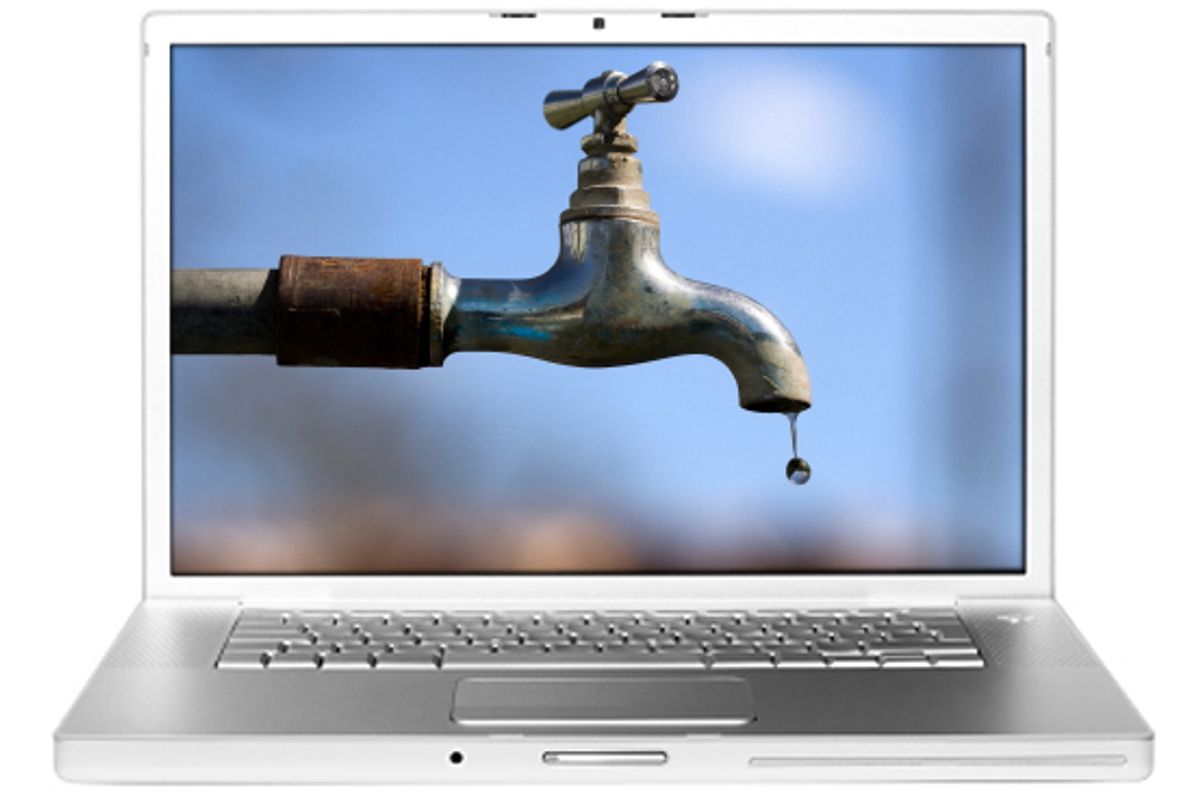I was talking about that scene from the 1974 movie "Earthquake," in which a Boeing 707 pulls off a just-in-the-nick-of-time go-around after the Big One puts a great big crack in the runway at LAX. It's a pretty good cameo, so far as airplane cameos go, but not my favorite.
That honor belongs to the jetliner that appears in the closing minutes of the movie "Dog Day Afternoon." Bank robber Al Pacino is captured and handcuffed in a scene that unfolds at Kennedy Airport. In the background is a noisily idling jetliner, which Pacino thought would be his getaway plane. What makes it so cool is that the plane is a Convair CV-990, a now-extinct, four-engine jet that was an uncommon sight even in 1975 when the movie was released. This peculiar rara avis is shown in the colors of Modern Air, a real-life charter carrier around at the time.
What a great name that was: Modern Air. Today we get nonsense like "AirTran."
"Dog Day Afternoon" was one of few major motion pictures recorded with no backing music whatsoever. Yet that closing scene is all about sound. Airplane sound. The earsplitting whine of the Convair's first-generation turbofans, and the roar of unseen planes taking off.
I'm also partial to that fish-eye shot of the airplane engine during the opening credits of the old "Hawaii Five-O." I would watch that show just for that quick, two-second glimpse -- though to this day I can't figure out if it's a DC-8 or a 707.
- - - - - - - - - -
On long-haul flights, when the time comes to sleep, the temperature in the cabin seems to rise substantially and I wake up in a sweat. My colleagues find the same problem, so I don't think it's my imagination. Does the crew raise the temperature, thinking it will keep us dormant?
Some crews might do this of their own volition because they assume a warmer cabin is more comfortable for sleeping, but there is no policy, written or unwritten, of turning up the temperature on an overnight flight.
On the planes I fly, temperature is controlled from the cockpit. The cabin is divided into three zones, with separate controllers and temperature readouts for each. On the ground, until one or more engines has been running and the cabin remains susceptible to the conditions outside, we'll often move the settings toward full cold or full hot. But when aloft -- day or night, long flight or short -- we set the dials to an intermediate position and usually don't change them unless somebody complains. The temperature gauges are accurate to a point, but we rely on the flight attendants for fine-tuning. Two or three times over the course of a long flight they will ring the cockpit to request it be made warmer or cooler in a particular section of the plane. You and your colleagues seem to experience warmer than average conditions, but we get just as many requests to turn up the temperature as we do to turn it down.
On many aircraft the flight attendants have direct control over temperature and will adjust it as they see fit. Again there is no protocol here beyond common sense: If it feels cold, they'll warm it up. If it's hot, they'll cool it down.
A few weeks ago you discussed how pilots slow an airplane to taxi speed after landing. This got me thinking. I understand that a plane's control wheel is used for turns during flight, but what about on the ground? Is this same wheel used to guide a plane along taxiways, like the steering wheel in a car?
The main control wheel links only to the ailerons and has no function on the ground. Instead, steering is controlled mainly through use of a tiller -- a steering wheel-like device that is side-mounted near the pilot's knee and connected to the forward (nose) landing gear. On some planes only the captain's side has a tiller; other planes have them on both sides.
The rudder pedals also have limited control over the nose gear. Pedal steering is used during takeoff, and after landing until the plane has reached a safe taxi speed. The plane I fly has a tiller only on the captain's side, but after one of my extremely smooth landings I can easily maneuver the jet clear of the runway using the pedals. The captain then takes over with the tiller.
On the ground, can a plane move backward under its own power?
A plane's wheels are equipped with highly sophisticated brakes and anti-skid technology, but they are not geared or directly driven like the wheels of an automobile -- such hardware would be heavy, complicated, expensive and then only of marginal use. The tires roll free; the plane moves only in the direction that engine thrust tells it to move. Thus, give it enough reverse thrust, and sure, a plane can be made to roll backward.
For reasons of both cost and safety, however, this is almost never done. Instead, a tug is used.
American Airlines was among a few carriers that once authorized so-called powerbacks for its MD-80 series planes. The MD-80 was a good choice for this, as its engines are aft-mounted and high off the ground, keeping jet blast clear of people and equipment. Still, while it saved a little time and reduced wear and tear on the nose-gear struts, it wasn't worth the ruckus and added fuel costs. Among other complications, directional control is difficult and braking has to be managed carefully. Rolling backward, a tail-heavy plane is liable to tip on its rear end if the brakes are applied forcefully enough.
- - - - - - - - - - - -
Do you have questions for Salon's aviation expert? Contact Patrick Smith through his website and look for answers in a future column.



Shares